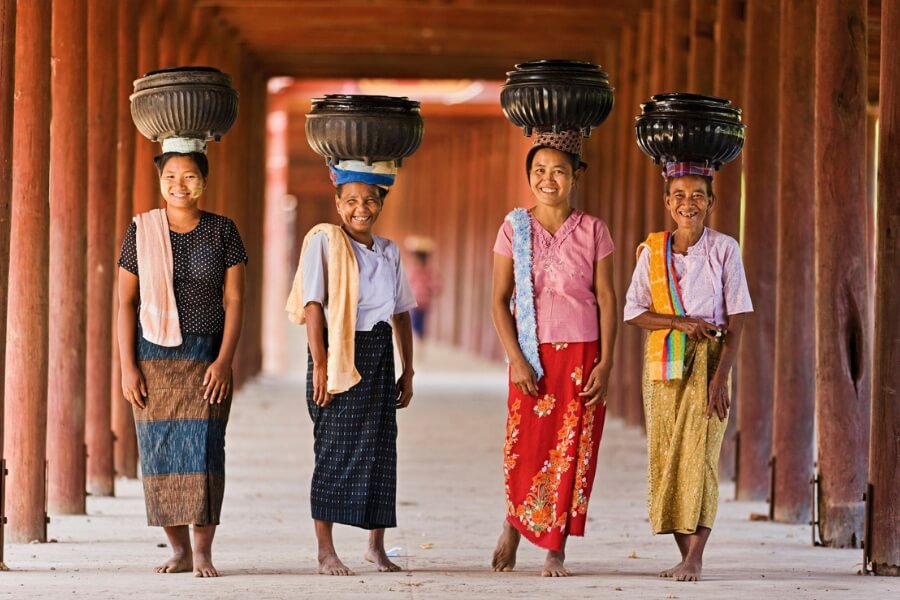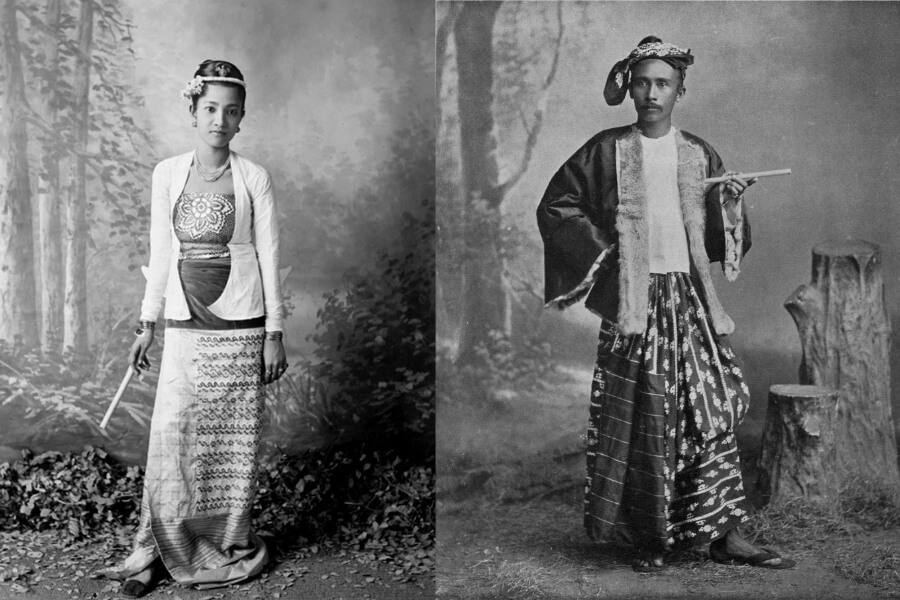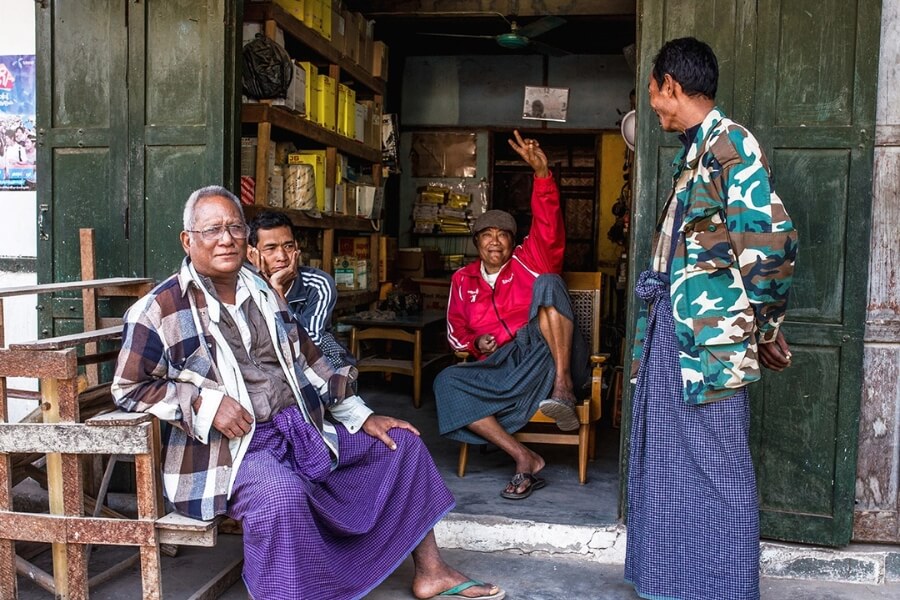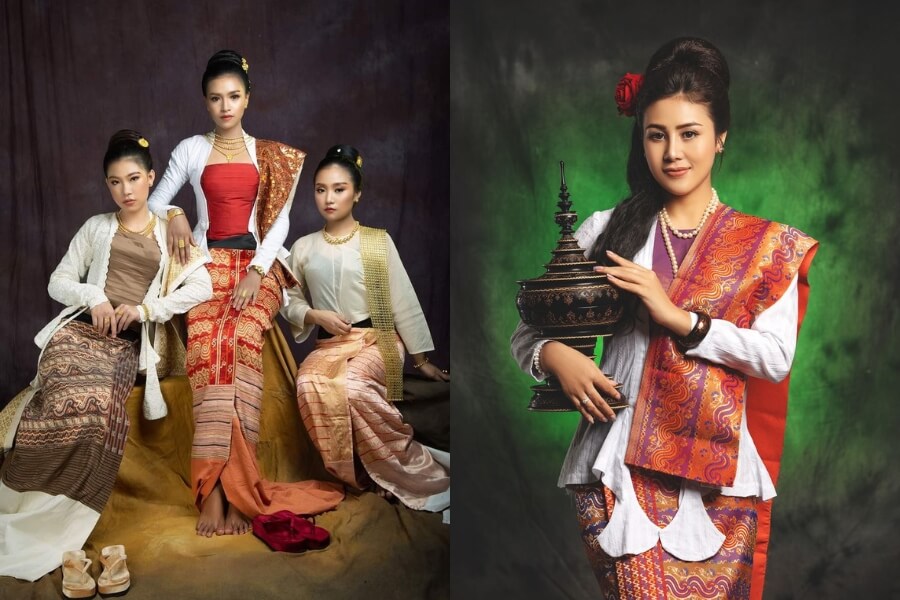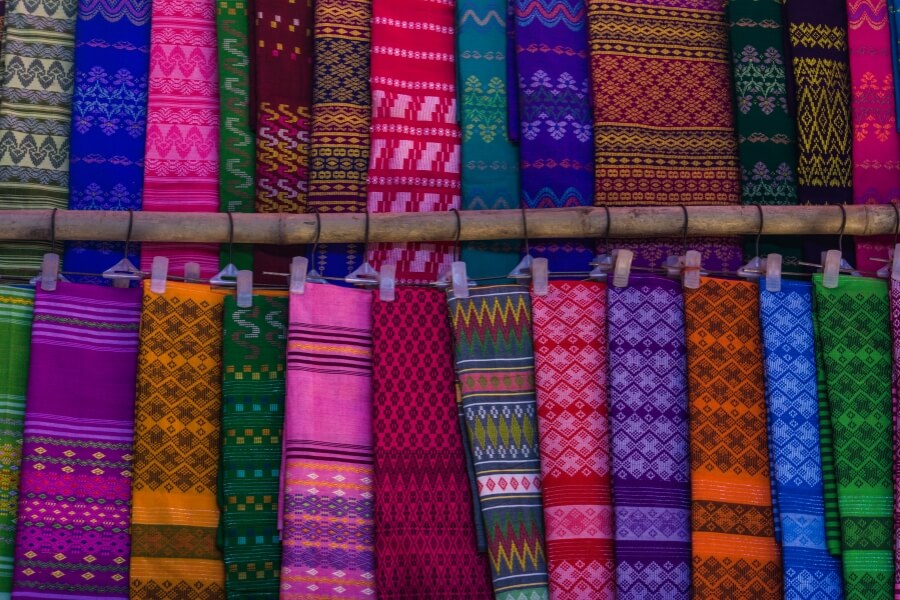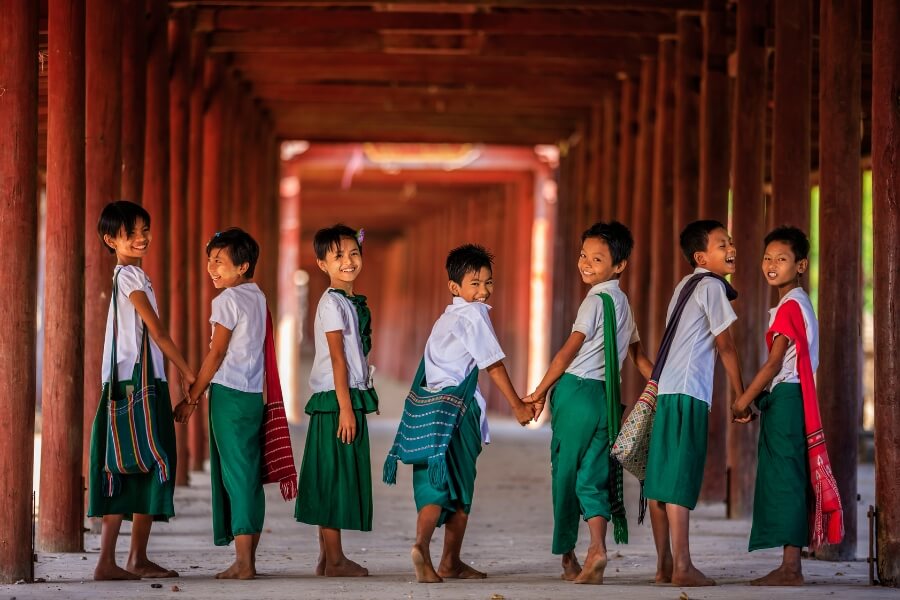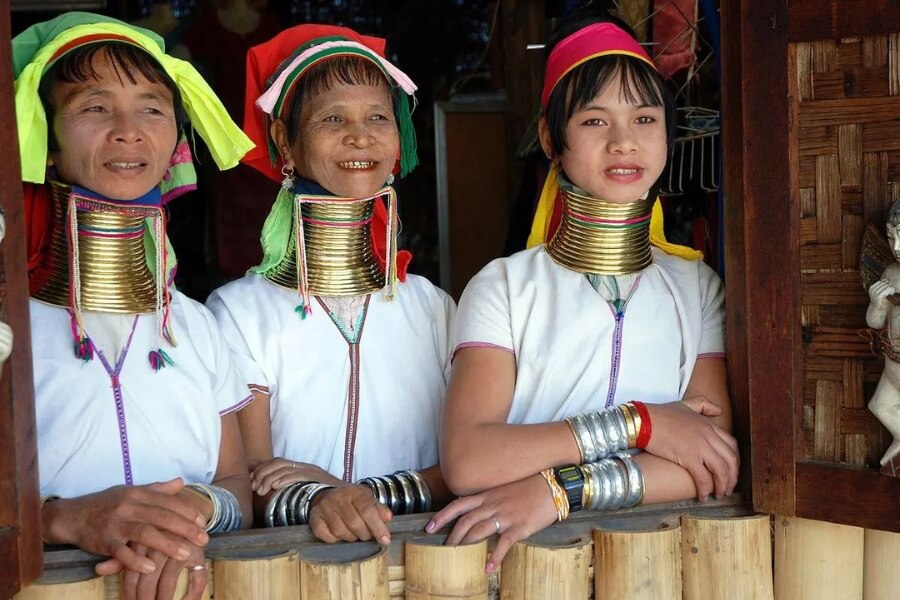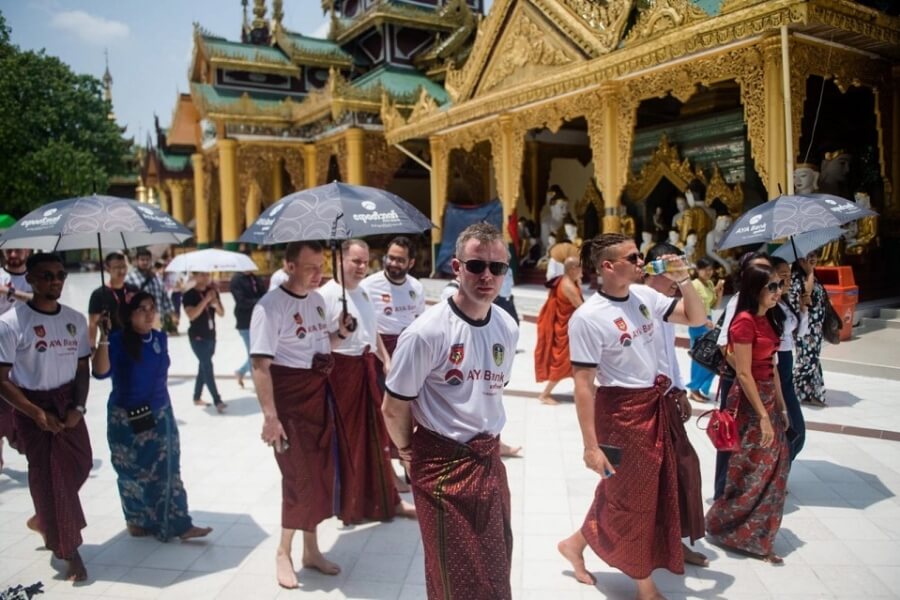In the heart of Southeast Asia, where golden pagodas pierce the skyline and rivers carve through lush landscapes, Myanmar's national costume emerges as a vibrant emblem of its cultural heritage. Far more than mere clothing, the Myanmar national costume - encompassing the iconic longyi for both men and women - serves as a living narrative, weaving tales of resilience, identity, and adaptation. Picture yourself wandering the bustling streets of Yangon or the serene temples of Bagan, where locals in flowing Myanmar traditional dress move with effortless grace, their garments catching the light like petals in the breeze. This Myanmar outfit, both vibrant and practical, mirrors the nation’s tropical climate, diverse ethnic mosaic, and historical journey from ancient kingdoms to modern times. For those embarking on Indochina tours, Myanmar’s traditional clothes offer a unique window into a culture where clothing is an extension of the soul, inviting travelers to immerse themselves in a world of warmth and heritage.
History of Myanmar National Costume
The story of the Myanmar national costume unfolds like an ancient scroll, revealing layers of influence from millennia of kingdoms, migrations, and external forces. Tracing back to the Pyu city-states around the 2nd century BCE, early depictions in sculptures from sites like Hanlin and Sri Ksetra show men in simple headwraps and loincloths, while women donned thin, form-fitting skirts adorned with head ornaments - fabrics primarily cotton, aligning with non-violent Buddhist principles that shunned silk production from silkworms. By the Pagan Kingdom in the 9th century, imported luxuries like silk and velvet elevated royal attire, with kings in elaborate robes and aristocratic women in strapless bodices that evolved into looser, more practical designs.
The Konbaung Dynasty in the 18th century marked a golden era for the Myanmar traditional dress, where sumptuary laws dictated fabrics and patterns based on social rank - peacock motifs and metallic threads reserved for royalty, symbolizing power and divine favor. Women's ensembles featured floral headpieces, embroidered blouses, felt slippers, and the htamein - a wrap-around skirt that exuded elegance - while men sported turbans, fur-embellished silk jackets, cotton shirts, and hnyat-phanat slippers. These outfits weren't just clothing; they were statements of hierarchy and artistry, woven on household looms that buzzed in every village.
British colonial rule in the 19th century introduced subtle yet profound shifts, dismantling sumptuary laws and blending Western elements like muslin blouses and shorter hems. Indian immigrants brought sarong-like influences, transforming the pre-colonial paso and htamein into the modern longyi, which gained popularity for its simplicity during the resistance movements. Post-independence, leaders like U Nu championed the Myanmar costume as a badge of national pride, encouraging its daily wear to foster unity amid ethnic diversity. Today, this evolution reflects Myanmar's adaptive spirit, where ancient threads meet contemporary life, preserving a heritage that's as dynamic as the monsoon rains.
Myanmar National Costume for Men
At the core of the Myanmar national costume for men lies the longyi, or paso in its formal guise - a versatile tube of fabric that wraps around the waist like a second skin, offering both dignity and ease in the sweltering heat. Measuring about two meters long and 80 centimeters wide, it's folded at the front and tucked securely below the navel, creating a knot that men deftly adjust throughout the day - a subtle dance of functionality. Traditionally, darker shades like black, brown, or navy dominate, often patterned with stripes or checks that nod to regional weaves, making the Myanmar outfit practical for farmers tilling rice paddies or professionals navigating Yangon's bustling streets.
Paired with the longyi is the taikpon eingyi, a collarless jacket inspired by Manchu styles, worn over a white button-down shirt for formal occasions - think weddings or temple visits where the ensemble evokes a sense of timeless poise. In casual settings, modern adaptations include T-shirts or sports shirts, blending the Myanmar traditional clothes with global trends without losing their essence. Footwear completes the look: simple flip-flops for everyday errands or velvet gadiba phanat sandals for ceremonies, echoing the opulence of Konbaung courts. What makes this Myanmar costume truly captivating is its ingenuity - no pockets mean essentials are tucked into the waist fold, turning the garment into a portable haven. For ethnic groups like the Shan, men's longyis might feature red checks, while Kachin variations incorporate geometric patterns, adding layers of personal and communal identity that make each outfit a narrative of belonging.
Myanmar National Costume for Women
Women's Myanmar national costume radiates with color and intricacy, centering on the htamein - a luminous wrap-around skirt that swirls with floral motifs and arabesque designs, secured by a black cotton band called ahtet hsin to ensure grace and security. Folded to the left and tucked at the side, it's a canvas of vibrancy, often in silk or cotton, reflecting the wearer's mood or occasion - from everyday errands in pastel hues to festive explosions of red symbolizing luck and prosperity.
Topping the htamein is the eingyi blouse, available in yinzi (front-buttoned) or yinbon (side-buttoned) styles, ending at the waist to accentuate movement. For special events, the htaingmathein jacket - tight-fitting and hip-length, sometimes flared with sequins - adds a regal touch, reminiscent of aristocratic fashions that resisted wrinkling during long sittings. Accessories like shawls or sibone headdresses elevate the Myanmar traditional dress, especially in dances or weddings, where the outfit becomes a symphony of motion and heritage.
Ethnic flair enriches this palette: Karen women layer long tunics over striped longyis with headbands, while Kayah ensembles feature red cloaks and headdresses, embodying strength and community bonds. The Myanmar outfit for women isn't just apparel; it's empowerment wrapped in beauty, allowing fluidity in a world of rituals and routines, where a dab of thanaka paste on the cheeks completes the portrait of natural elegance.
Cultural Significance of Myanmar National Costume
Beyond aesthetics, the Myanmar national costume holds profound cultural weight, serving as a symbol of unity in a nation of over 135 ethnic groups. The longyi, for instance, transcends gender and class, fostering equality in daily life while its acheik patterns - intricate waves woven with up to 200 silk shuttles - once signified royal favor and now embody artisanal pride. During colonial times, donning the Yaw longyi became an act of defiance, a quiet rebellion against Western imposition that reinforced national identity.
In festivals like Thingyan, the water festival, Bamar women in white blouses and green longyis symbolize purity and renewal, while Shan headscarves during dances express cultural pride. This Myanmar traditional clothes weave stories of resilience, with ethnic variations like Chin metallic belts or Mon yat toot shawls highlighting diversity - each thread a testament to shared histories and unique legacies. In a globalizing world, these garments remind us of the power of tradition to ground identity, turning everyday wear into a celebration of heritage that resonates deeply with both locals and visitors.
When Myanmar People Wear Their National Dress
What sets the Myanmar national costume apart is its seamless integration into daily existence, worn not just for pomp but for life's rhythm. In the humid embrace of Myanmar's climate, the longyi's breathable fabric makes it ideal for everything from market haggling to motorbike rides, easily adjusted or removed for river dips or temple prostrations. Men in subdued tones tackle fields or offices, while women's colorful Myanmar outfits bloom in kitchens and streets, paired with flip-flops that echo simplicity.
Yet, occasions amplify its splendor: During Thingyan, splashes of water dance off vibrant htameins, symbolizing cleansing and joy. Weddings see elaborate acheik silks and htaingmathein jackets, blending tradition with Western shoes for a fusion of eras. Ingeniously, the garment multitasks - as a sunshade, rain barrier, or even a makeshift carrier - reflecting the Myanmar people's resourceful, unpretentious ethos. With minimal makeup, just thanaka for protection, this attire fosters approachability, drawing travelers into authentic connections that linger long after the journey.
Regional and Ethnic Variations in Myanmar Traditional Clothes
Myanmar's mosaic of ethnicities adds infinite variety to its national costume, each group infusing unique colors, patterns, and meanings. The Bamar majority favors classic longyis, but venture to the hills, and Chin women dazzle in ankle-length wraps with metallic belts and front-opening blouses, symbols of communal bonds. Kachin attire features geometric motifs on longyis, with women adding metallic shawls that glint like mountain streams, representing ancestral ties.
In the east, Shan longyis boast bold checks, and women's sao pha headscarves whirl in dances, evoking pride and identity. Karen men don tassel headdresses over tunics and longyis, while women layer embroidered tunics, their stripes narrating village stories. Kayah red cloaks and headdresses pair with black or red longyis, men opting for baggy trousers and silver daggers - a blend of utility and symbolism. Mon variations include combs in buns and yat toot shawls, preserving coastal elegance. These Myanmar traditional clothes aren't static; they're vibrant expressions of diversity, influenced by neighbors like India and Thailand, yet distinctly Burmese in their harmonious blend.
Development of Myanmar National Costume
The Myanmar national costume has gracefully navigated modernity, incorporating slits, zippers, and shorter hems in women's htameins for urban agility, while men's longyis blend synthetics for durability. Acheik weaving, once royal, now faces machine imitations from abroad, yet handmade pieces thrive in workshops like those in Amarapura, sustaining livelihoods and heritage.
Globally, the longyi captivates - tourists in Yangon adopt it for its liberating feel, and designers in Australia fuse it into fashion lines, proving its timeless appeal. Young Burmese revive weaving traditions, merging them with contemporary cuts, ensuring the Myanmar outfit evolves without fading. In an era of fast fashion, this garment stands as a beacon of sustainable, meaningful style.
The Myanmar national costume, with its rich history and vibrant adaptations, invites a deeper appreciation of a culture that's as intricate as its weaves. From royal legacies to everyday expressions, these traditional dresses and clothes capture the essence of a nation poised between tradition and tomorrow. If this sparks your wanderlust, why not step into the story yourself? Explore Myanmar's enchanting world, try on a longyi, and let its folds carry you through unforgettable adventures.

